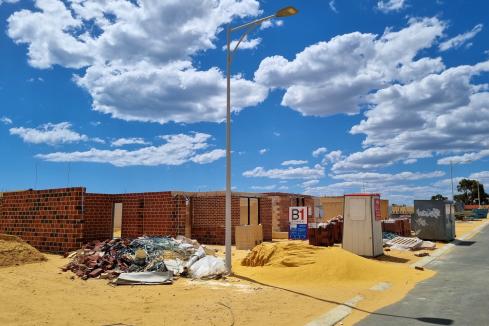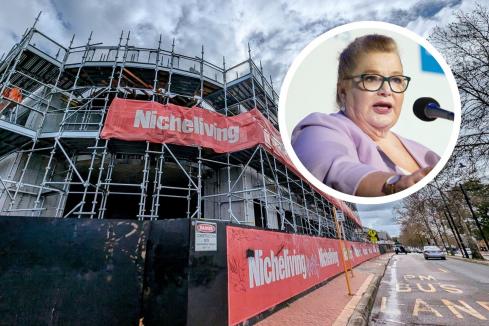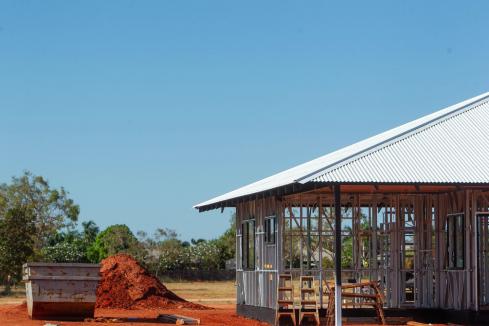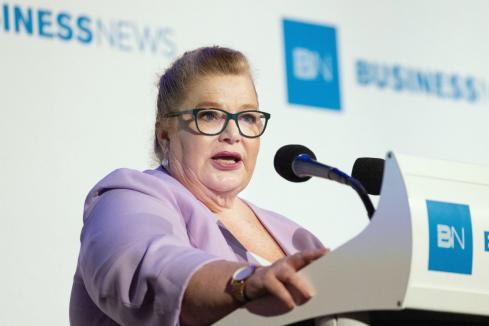A rise in failed builders has led to more indemnity claims, but taking on the stalled work can be fraught.

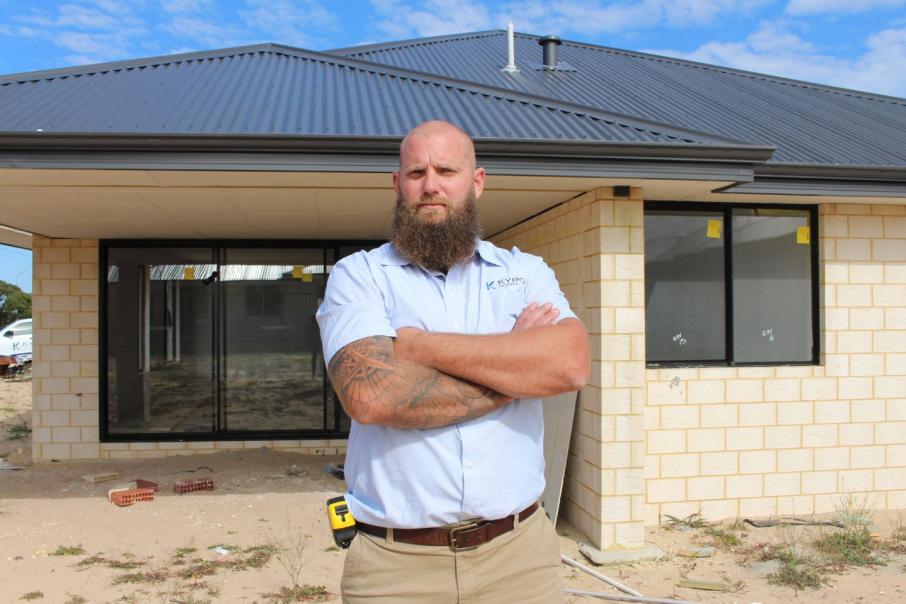
The past three years have been incredibly tumultuous for the residential building sector.
Rapidly rising construction costs, coupled with a wave of demand sparked by state and federal stimulus for new builds and a lack of trades and supply chain snarls have contributed to the downfall of many building companies.
The stimulus activity during COVID led to many builders overselling new homes they were left without the capacity to complete, which left customers frustrated and builders hit financially.
Housing Industry Association of WA data show 27 registered builders went into administration in the recent financial year, above the seven-year average of 22.
Australian Securities and Investments Commission data show many more companies associated with the building industry, such as suppliers and contractors, have also failed in recent months.
When a builder collapses, consumers can unlock up to $200,000 in indemnity insurance to complete their home.
The insurance, also referred to as homeowner warranty, is underwritten by the state government and administered by the state’s only remaining home warranty insurer QBE.
The maximum amount homebuilders can claim was doubled last year in response to rising cost pressures that left many builders overexposed relative to their level of cover.
Indemnity insurance claims spiked in 2021-22 at 564 claims in WA, up from 376 the previous financial year and 442 in 2018-19, data from the Department of Mines, Industry Regulation and Safety’s Building and Energy division show.
In the recent financial year, WA home indemnity insurance claims decreased to 448, however, the amount claimed rose from $16.5 million in 2021-22 to $18.6 million in the year to June.
The rate of company collapses, and volume of unfinished homes, has led to questions about whether some of these homes will ever be finished, particularly when the $200,000 cap is exceeded or when the job carries a high risk due to structural defects.
HIA WA executive director Michael McGowan said indemnity work was not suited to every builder but he felt confident there were enough companies around to take on the work.
Some builders have shifted their business model to take on more indemnity jobs, while others continue to steer clear of completing the work of collapsed builders.
On the ground
Modco Residential’s collapse left several unfinished homes around Perth, with early reports stating 29 customers were left in the lurch as a result of the company’s collapse.
This was revised down to 18 builds, with building broker Builderz WA tasked with finding builders for 11 of those jobs.
Balcatta’s New Era Homes, Mandurah’s Kyros Homes and Perth’s iBuiltWA are preparing to complete those 11 homes.
Kyros Homes managing director and owner Walter Ten Haaf is taking on a former Modco job in Madora Bay and is looking to work on others.
 Modco Residential collapsed before this Madora Bay home was finished. Photo: Claire Tyrrell
Modco Residential collapsed before this Madora Bay home was finished. Photo: Claire Tyrrell
He told Business News he was increasingly contacted to take on the work of failed builders.
“I get two to four emails a week from people saying my builder’s gone into liquidation, can we get it finished,” he said.
“It has been increasing since February to March and ramping up since then.”
The Madora Bay client signed the contract with Modco in December 2020 but the slab was not poured until October 2022.
Mr Ten Haaf is confident of being able to get the job done by Christmas.
“The client was pretty happy I was coming out but obviously pretty frustrated with the delays he’s had already; he just wants it finished,” he said.
Kyros Homes was registered in 2021 and has five people on staff, plus a construction team.
Mr Ten Haaf, who has been in the industry for more than 20 years, made a call not to grow so quickly that it would impact the quality of his builds.
“We didn’t want to grow fast, we wanted to grow sustainably,” he said.
“If that means we say no to work, because we made 10 clients happy rather than keeping 20 happy at the beginning and pissing all 20 off at the end, I’d rather just keep 10 happy.”
Builders, including Kyros Homes, are having to turn down some indemnity jobs because the quote to finish the work is markedly higher than $200,000 and the client does not have the money to pay the difference.
While HIA WA says the indemnity cap should cover 85 to 90 per cent of incomplete homes due to builder collapses, there are concerns the cap could lead to some partly built homes being left abandoned.
Builderz WA managing director Cullum Ashton said when builders were not able to help clients because it was not financially viable to do so, it was extremely hard.
“That is when it’s really people are stuck in limbo, and that will create a derelict appearance in the suburbs we live in,” Mr Ashton said.
“The builders on our panel would like to see an increase to the insurance cap; it’s the only way we can complete jobs.”
He said the rate of builder collapses had “devastated trust in builders”.
“What was a very noble profession in helping people build their home is now [at a point where] we need to do some reputational repair,” Mr Ashton said.
Osborne Park builder Patterson Construction has been operating since 2019, when its founder and managing director Lucas Patterson left BGC to pursue his own business.
The company was largely focused on new builds, until mid-2022, when Mr Patterson shifted his focus to pick up indemnity jobs.
“I realised with the price of supply and labour there was going to be a lot of pressure on builders that weren’t adaptable, so I positioned the business [to take on insurance jobs] and added another string to my bow,” he told Business News.
Mr Patterson said that during this time of instability for builders, most of his work was in the indemnity insurance market.
“I know it’s not going to be forever; I’ll get through this period and then start advancing again with new builds,” he said.
Mr Patterson is finishing jobs started by collapsed builders in Kewdale, Willagee, Wellard, Balga and Gosnells, and is speaking with a customer in Mount Hawthorn about their indemnity claim.
The companies he is picking up jobs for include City Residence, WA Housing Group and Flexible Homes.
Mr Patterson’s desire to take on these jobs stems from his passion for helping people.
“I spend a lot of time volunteering and helping [and] at the moment there’s a lot of work in this space, so that is where I will stay for the short term,” he said.
“I enjoy helping these people because they are in such a terrible position; I could go and get new jobs but while there are people who need help, I will help them.”
Once a builder goes under, QBE asks homeowners to source and provide quotes from registered builders of their choice.
Mr Patterson said consumers are often left stuck during this process, faced with a lack of choice of builders to finish a job.
“[Some clients] go for whatever quote they can get to finish off their home … compared with building a new home, where there are more options,” he said.
Challenges
New Home Building Brokers managing director Tristan Kirkham pointed out the difficulties builders faced when taking on indemnity work.
“Sometimes a builder can’t tell whether something is done properly or not, unless they pull it down, and that’s a challenge,” he said.
Mr Kirkham said he knew of a builder picking up jobs in Ellenbrook, which had no pre-laid pipes under the concrete slab.
“The cost to put that in turns the job into a renovation.”
 Lucas Patterson (right) is helping Navendra Fernando, whose Kewdale home was left incomplete.
Lucas Patterson (right) is helping Navendra Fernando, whose Kewdale home was left incomplete.
While demand was still high for new homes, getting builders to take on indemnity work was a challenge.
“I think in a heated market, tradies will always want to choose brand new work rather than rectifying work,” Mr Kirkham said.
“The costs for those jobs are more, the tradies will want more because they’ve got more issues.
“It is not as simple as just picking it up and finishing it off.”
Mr Kirkham said the builders who did take on this work needed to be prepared for the potential issues associated with completing unbuilt jobs.
“It takes a builder to be dedicated to just problem solve,” he said.
“There are a lot of good ones who do that, but why would they keep taking on the problem-solving work when they can get brand new stuff in this market?”
West Coast Residential director Washington Avila has taken on indemnity jobs for the past six years, initially taking on some of the work of collapsed builder Benchmark Designer Homes.
Speaking to Business News, Mr Avila said indemnity work made up about 10 per cent of his business, with that figure remaining steady over the years.
“It’s not our bread and butter, because they (those jobs) are super resource hungry,” he said.
“You’ve got to go backwards before you go forwards [and] it’s a bit of cat and mouse working out what they (the previous builder) has and hasn’t done.”
Mr Avila said that in his experience, builders that were under financial stress often took shortcuts well ahead of pulling the pin, which meant completing a build could involve more work than met the eye.
“What you think you are dealing with, generally the magnitude is a lot bigger, because they have been taking shortcuts for quite some time.”
For the Wangara-based builder, there have been occasions where he has not been able to take on indemnity work, because the work left on the job exceeded the amount a customer could claim.
In the case of a recent Scarborough job, West Coast Residential could not take on the work due to the level of risk involved created by the former builder’s work.
“It was a rare case, but there were some significant building standard non-compliances that were going to [create] massive problems,” he said.
“It breaks your heart, but we are not miracle workers; all we can do is quote to finish it but … we couldn’t touch it.
“There is always risk in these jobs.
“We have clauses to minimise it but ultimately you can’t waive your rights from a building code.”
Master Builders Association of WA executive director John Gelavis said builders who took on indemnity work undertook specific measures to mitigate risk and ensure the project could be completed without further undue complications.
“This will include structural inspections and reporting, additional quality assurance measures with financials, project scope and timelines and impacts of current market conditions for the duration of the project,” he said.
Mr Gelavis said the MBA supported the recent doubling of the indemnity cap but added that continued industry and government collaboration was key to ensuring consumers and builders were not detrimentally impacted by the maximum limits.
He said the organisation was working closely with Building and Energy towards industry reforms that helped protect builders from insolvency and focused on quality builds.







